RECENT ARTICLES

Earth's inner core is doing something weird
Please be respectful of copyright. Unauthorized use is prohibited.On September 27, 1971, a nuclear bomb exploded on Russia’s Novaya Zemlya islands. The powerful blast sent waves rippling so deep inside Earth they ricocheted off the inner core, pinging an array of hundreds of mechanical ears some 4,000 miles away in the Montana wilderness. Three years later, that array picked up a signal when a second bomb exploded at nearly the same spot.This pair of nuclear explosions was part of hundreds of tests detonated during the throes of Cold War fervor. Now, the records of these wiggles are making...…Please be respectful of copyright. Unauthorized use is prohibited.On September 27, 1971, a nuclear bomb exploded on Russia’s Novaya Zemlya islands. The powerful blast sent waves rippling so deep inside Earth they ricocheted off the inner core, pinging an array of hundreds of mechanical ears some 4,000 miles away in the Montana wilderness. Three years later, that array picked up a signal when a second bomb exploded at nearly the same spot.This pair of nuclear explosions was part of hundreds of tests detonated during the throes of Cold War fervor. Now, the records of these wiggles are making...WW…
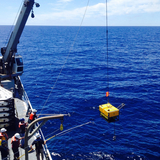
A tectonic plate is dying under Oregon. Here’s why that matters.
A peek into the curious geology of the Pacific Northwest helps tease apart what may happen when the last bits of an oceanic plate get swallowed up.Something was nagging at , and it was more about what was missing than what was there.As a Ph.D. student at the University of California, Berkeley, Hawley is fascinated with the geologic , a giant fault off the coast of the Pacific Northwest. There, the Juan de Fuca tectonic plate plunges under the North American plate, building strain throughout the region and prompting fears of when it releases.Hawley, however, was distracted by a peculiar...…A peek into the curious geology of the Pacific Northwest helps tease apart what may happen when the last bits of an oceanic plate get swallowed up.Something was nagging at , and it was more about what was missing than what was there.As a Ph.D. student at the University of California, Berkeley, Hawley is fascinated with the geologic , a giant fault off the coast of the Pacific Northwest. There, the Juan de Fuca tectonic plate plunges under the North American plate, building strain throughout the region and prompting fears of when it releases.Hawley, however, was distracted by a peculiar...WW…
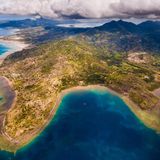
Strange earthquake waves rippled around Earth, and nobody knows why
Please be respectful of copyright. Unauthorized use is prohibited.On the morning of November 11, just before 9:30 UT, a .The seismic waves began roughly 15 miles off the shores of Mayotte, a French island sandwiched between Africa and the northern tip of Madagascar. The waves buzzed across Africa, ringing sensors in Zambia, , and Ethiopia. They traversed vast oceans, humming across , , , and even nearly 11,000 miles away.These waves didn't just zip by; they rang for more than 20 minutes. And yet, it seems, no human felt them.Only one person noticed the odd signal on the U.S. Geological...…Please be respectful of copyright. Unauthorized use is prohibited.On the morning of November 11, just before 9:30 UT, a .The seismic waves began roughly 15 miles off the shores of Mayotte, a French island sandwiched between Africa and the northern tip of Madagascar. The waves buzzed across Africa, ringing sensors in Zambia, , and Ethiopia. They traversed vast oceans, humming across , , , and even nearly 11,000 miles away.These waves didn't just zip by; they rang for more than 20 minutes. And yet, it seems, no human felt them.Only one person noticed the odd signal on the U.S. Geological...WW…
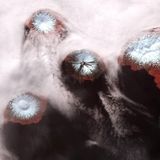
Alaska islands may be part of single, massive volcano
Please be respectful of copyright. Unauthorized use is prohibited.A trail of volcanic islands off the coast of southern Alaska may actually be part of a single giant caldera, according to evidence being presented next week at the fall meeting. If so, it’s possible the newly revealed volcanic giant once erupted in a blast large enough to dwarf .The behemoth in question is marked by a semi-circular cluster of peaks in the Aleutian Islands known as the (IFM). Long thought to be independent volcanoes, the six peaks—including Herbert, Carlisle, Cleveland, Tana, Uliaga, and Kagamil—may actually...…Please be respectful of copyright. Unauthorized use is prohibited.A trail of volcanic islands off the coast of southern Alaska may actually be part of a single giant caldera, according to evidence being presented next week at the fall meeting. If so, it’s possible the newly revealed volcanic giant once erupted in a blast large enough to dwarf .The behemoth in question is marked by a semi-circular cluster of peaks in the Aleutian Islands known as the (IFM). Long thought to be independent volcanoes, the six peaks—including Herbert, Carlisle, Cleveland, Tana, Uliaga, and Kagamil—may actually...WW…
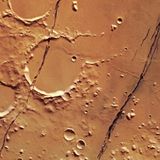
First active fault zone found on Mars
Rumbling quakes on the red planet have been traced back to Cerberus Fossae, suggesting this geologically young region is still alive and cracking.Millions of miles away, a robot geologist stands alone on the dusty surface of Mars, listening for faint seismic echoes in the ground below. Its finger on the red planet’s pulse is sensitive enough to pick up the whoosh of wind, the drone of dust devils, the creak of tectonic cracks, and many other rumbles ricocheting though the planet’s insides.While most of these signals have been indistinct murmurs, two have stood out loud and clear, allowing...…Rumbling quakes on the red planet have been traced back to Cerberus Fossae, suggesting this geologically young region is still alive and cracking.Millions of miles away, a robot geologist stands alone on the dusty surface of Mars, listening for faint seismic echoes in the ground below. Its finger on the red planet’s pulse is sensitive enough to pick up the whoosh of wind, the drone of dust devils, the creak of tectonic cracks, and many other rumbles ricocheting though the planet’s insides.While most of these signals have been indistinct murmurs, two have stood out loud and clear, allowing...WW…

Weird ‘boomerang’ earthquake detected under the Atlantic Ocean
A magnitude 7.2 earthquake bolted past Rosario García González’s house in Baja California on a spring afternoon in 2010. González, an elder of the indigenous Cucapah community, to scientists: As the quake cracked open the surface, it kicked up a cloud of dust, like a car racing across the shrubby landscapeBut the car, it seemed, was going the wrong way.Earthquakes usually crack the surface traveling in a single direction, like the tip of a tear through a piece of paper. But according to González, the dust cloud from the progressing quake was rushing back to where the temblor originated—the...…A magnitude 7.2 earthquake bolted past Rosario García González’s house in Baja California on a spring afternoon in 2010. González, an elder of the indigenous Cucapah community, to scientists: As the quake cracked open the surface, it kicked up a cloud of dust, like a car racing across the shrubby landscapeBut the car, it seemed, was going the wrong way.Earthquakes usually crack the surface traveling in a single direction, like the tip of a tear through a piece of paper. But according to González, the dust cloud from the progressing quake was rushing back to where the temblor originated—the...WW…
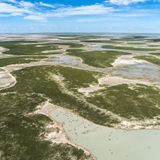
Controversial new study pinpoints where all modern humans arose
Please be respectful of copyright. Unauthorized use is prohibited.A powdery white layer blankets the desiccated landscape of Botswana’s Makgadikgadi pans, one of the world's largest salt flats. But some 200,000 years ago, this blank canvas would have been painted in the blues and greens of a flourishing wetland. Set in the middle of a harsh desert in southern Africa, the lush landscape would have been an appealing place for early humans to call home.Now, a controversial new study in Nature argues that this oasis, known as the Makgadikgadi–Okavango wetland, was not just any home, but the...…Please be respectful of copyright. Unauthorized use is prohibited.A powdery white layer blankets the desiccated landscape of Botswana’s Makgadikgadi pans, one of the world's largest salt flats. But some 200,000 years ago, this blank canvas would have been painted in the blues and greens of a flourishing wetland. Set in the middle of a harsh desert in southern Africa, the lush landscape would have been an appealing place for early humans to call home.Now, a controversial new study in Nature argues that this oasis, known as the Makgadikgadi–Okavango wetland, was not just any home, but the...WW…
- Total 7 items
- 1